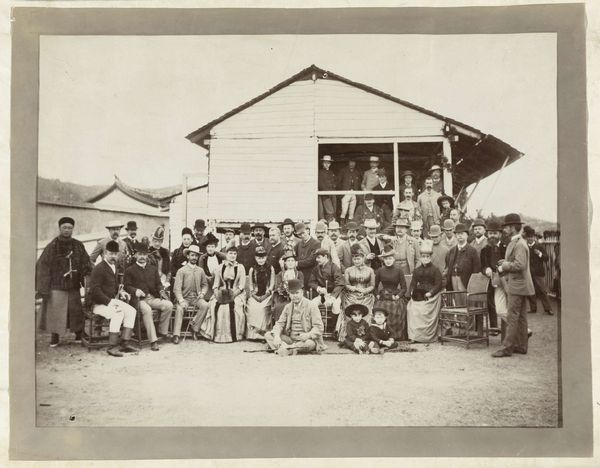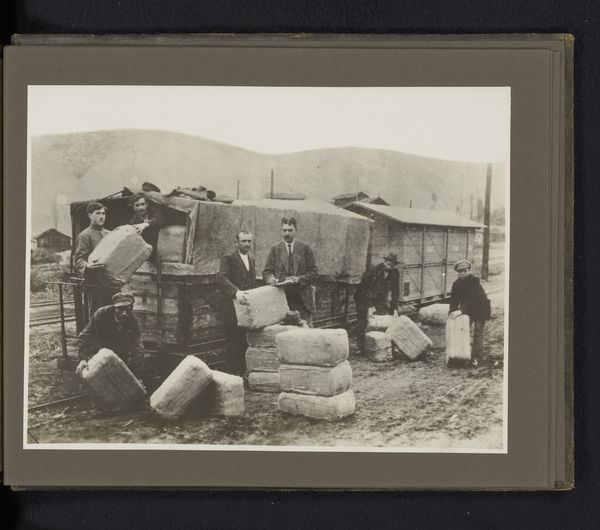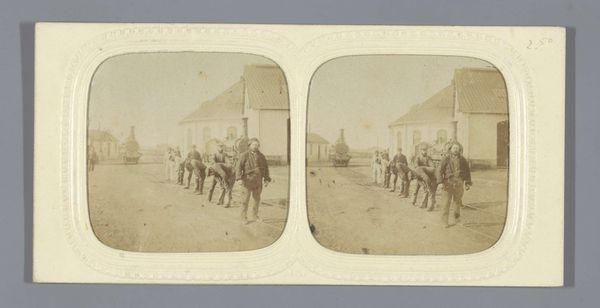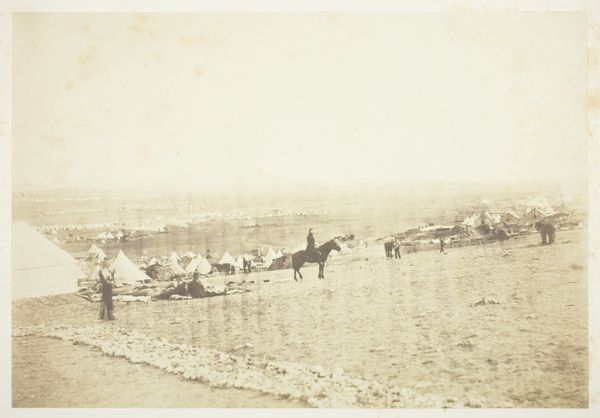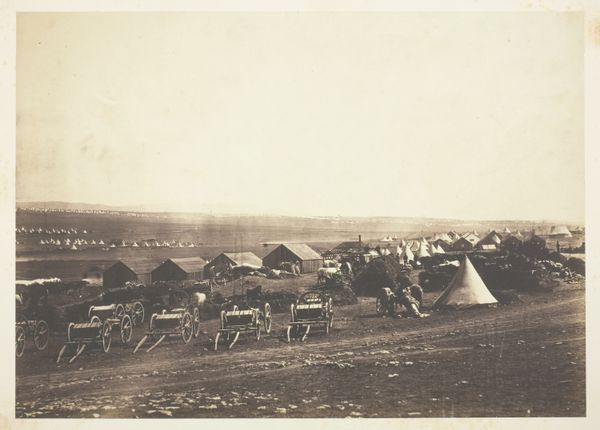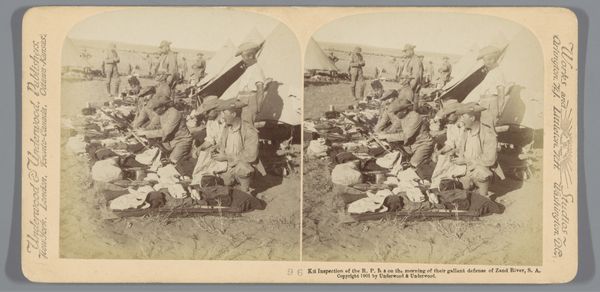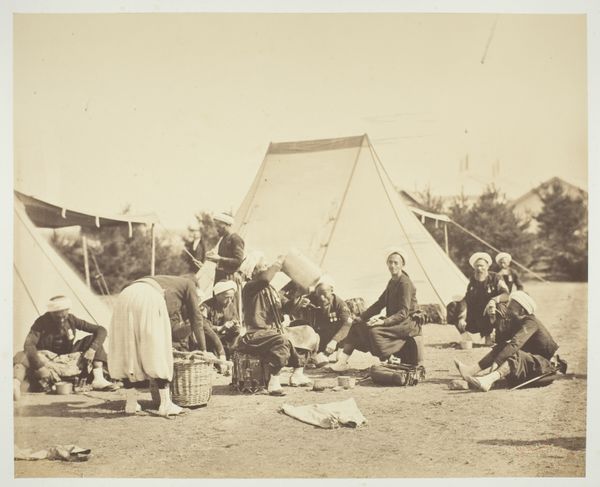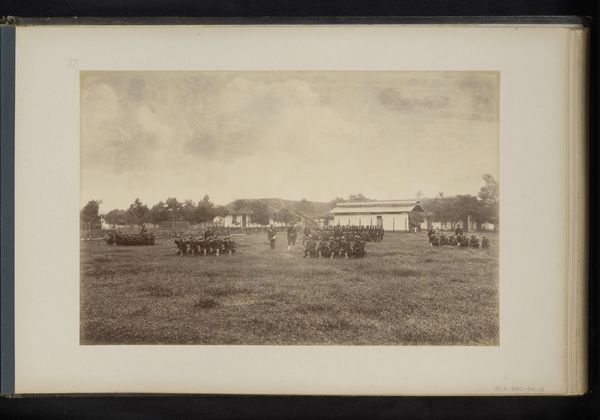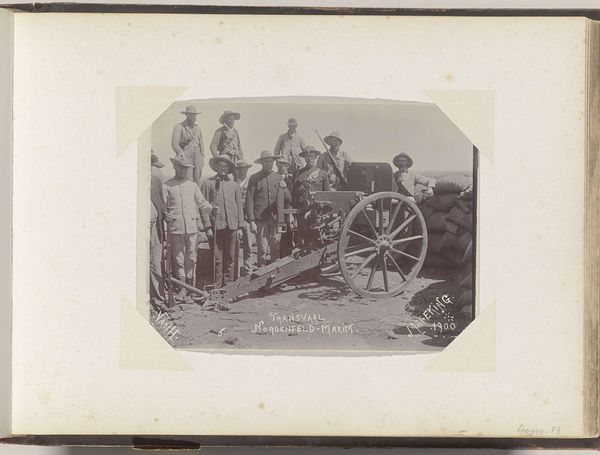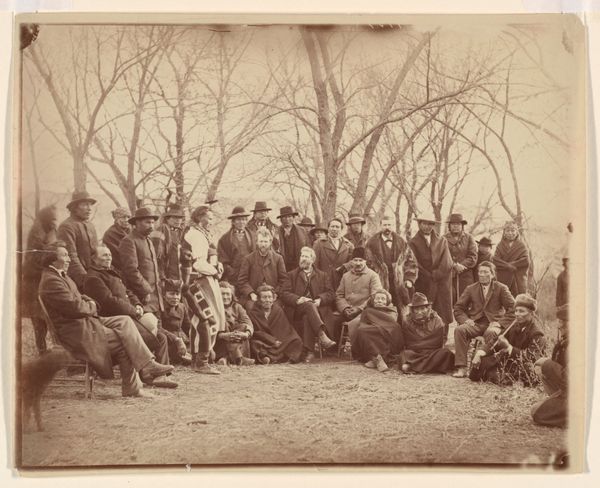
Verhuursters van handdoeken op het strand van Scheveningen, met op de achtergrond een rij badkoetsen c. 1870 - 1885
0:00
0:00
photography, gelatin-silver-print
#
portrait
#
photography
#
gelatin-silver-print
#
genre-painting
#
realism
Dimensions: height 98 mm, width 148 mm
Copyright: Rijks Museum: Open Domain
Editor: Here we have a gelatin silver print, taken by Carl Philip Wollrabe around 1870-1885. It's titled 'Towel Vendors on the Beach of Scheveningen with Bathing Wagons in the Background.' The group of women really dominate the frame, front and center. What strikes you most about this piece? Curator: What's immediately apparent is the documentation of labor and class dynamics inherent in early seaside tourism. This isn't just a picture of a beach; it's a study in how leisure is commodified. Look at the clear division between the working women and what the bath carriages likely represent - affluent bathers. How might this image speak to the beginnings of tourism shaping coastal communities and economies? Editor: I hadn't considered the economic aspect so explicitly. I was focusing on their stoic expressions. It is a business transaction, but the photo is very somber. Curator: Exactly. Consider also how the photograph itself participates in this dynamic. It captures and freezes this moment of labor, perhaps contributing to a romanticized view of "traditional" occupations even as those occupations are being altered by modern tourism. Does their attire give you a clue as to how their identity informs their service? Editor: Their clothing looks very uniform. I see only slight differences in each costume; their attire gives them an even more somber, steadfast quality. Curator: Wollrabe has captured a really complex moment. It speaks to identity, gendered labor, and the burgeoning tourism industry all wrapped into one frame. What did you initially think the "genre-painting" description implied? Editor: I just considered this to be a scene in history, now it feels like a portrait of labour as it begins its integration with a global economy. Curator: Precisely! And remember, images like these also had a role in shaping perceptions and expectations around work and leisure in rapidly changing societies. Editor: This was much more than I expected. Thanks for sharing your view.
Comments
No comments
Be the first to comment and join the conversation on the ultimate creative platform.
